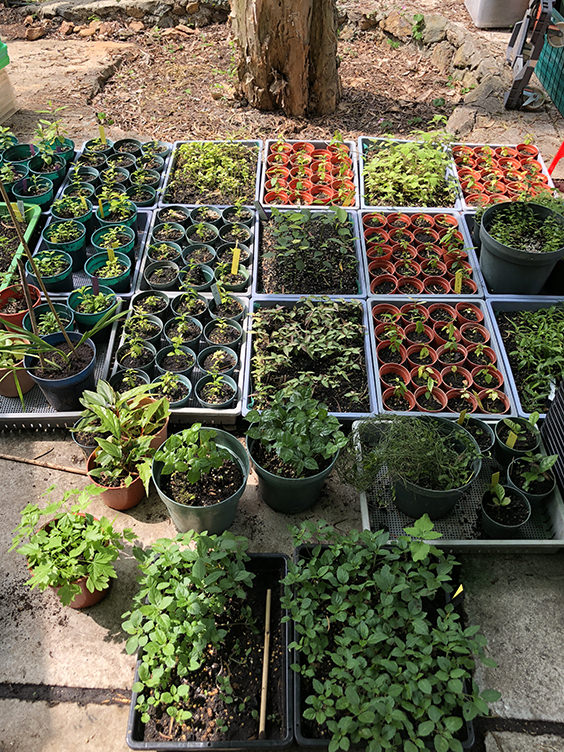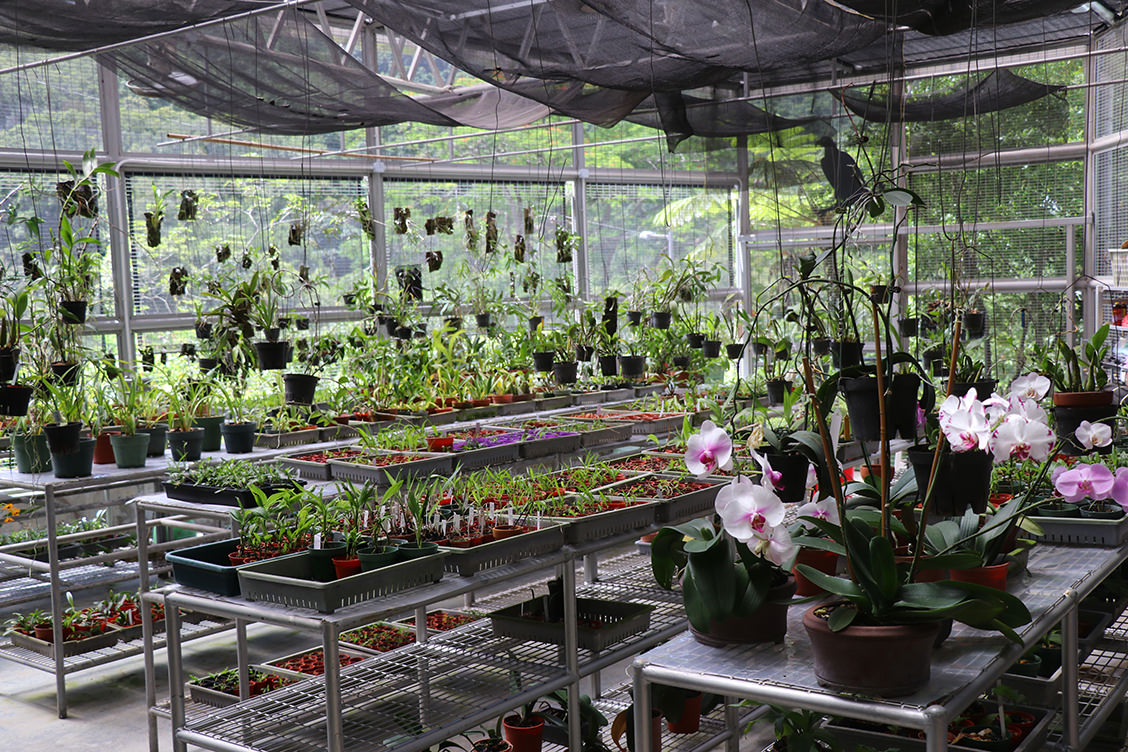
Fulfilling our goals in ecological restoration and plant species conservation demands large-scale propagation of a vast range of native Hong Kong plants. To furnish all the required resources and provide suitable growing conditions, Flora Conservation Department operates several plant propagation facilities. We have two nurseries dealing with native ferns, herbaceous plants, climbers and shrubs, and a Native Tree Nursery (NTN) that specialises in the production of tree saplings. To meet the fussy needs of specific plant groups, we also run a Mist House for the vegetative propagation of rare and tender species, and a micropropagation laboratory with two associated nurseries exclusively for the cultivation of orchids. The primary focus of our production is to supply plants used in our forest restoration work and for planting into our curated displays and ex situ conservation collections. However, we also grow plants for reintroduction off-site and we provide native plants to other NGOs working on similar restoration projects outside KFBG, as well as to landscaping companies and private gardens.
Most local species, including some very desirable ornamental species, are rarely, if ever, cultivated, and so devising techniques to suit them poses numerous challenges. This is why our nursery staff play such an important role in our conservation work.


Our horticulturalists participate in fieldwork so that they can see first-hand the habitats to which the plants brought back to our nurseries are adapted. This enables them to understand the growing conditions that may suit each species, both in the nursery and in future planting locations. The ideal light, moisture and nutrient levels for each species may go beyond what the plants receive in the wild, so the process of discovering how best to grow each species requires continuous observation.
One of the biggest challenges of growing local plants is deciding what to grow them in. The soil in Hong Kong is strongly acidic, often with a pH of around 5.5. Many local species become chlorotic even when grown in the kind of neutral soils that would suit the vast majority of plants.
Used on its own in pots, the clayey soil in which most species grow on Hong Kong’s hillsides has a tendency to compact, resulting in stagnant conditions which can cause root death. Whilst this may be overcome by using a peat-based medium, once planted out at sites within KFBG, the loose, organic material is rapidly washed away during heavy rain. Aside from the obvious sustainability issues relating to the harvesting of peat from the world’s limited peat swamps, this can seriously jeopardise the success of the planting. To work around such issues, we are experimenting with mixtures of compost, salvaged clayey slope soil and our own home-made biochar to develop the best possible medium.

Another peculiar challenge arises from one of the features of many local trees. In order to help withstand the severe winds and drier winter months associated with our monsoon climate, many native woody species produce a significant taproot that penetrates down into the soil, sometimes to a depth of up to 6 m! The growth of the taproot is often very rapid from an early stage of seedling development. This not only affects the choice of container in which the plant should be grown, but can also severely limit the time it can be kept in the nursery.
Whilst it is often preferable to grow plants from seed, because they offer scope for nurturing wider genetic diversity, vegetative propagation is also an invaluable tool for conservation. Cuttings of species whose seeds would take years to collect may be rooted and grown on to maturity so that we can then easily harvest their fruits in the future. And for species with only very few individuals remaining, having direct clones of those plants in the nursery offers assurance against natural or man-made calamities that may befall them in the wild. The Mist House provides a high humidity environment that reduces the transpiration stress that rootless cuttings suffer to a minimum, allowing them the time and stability needed to develop new roots. Whilst some species root easily even in the absence of such conditions, others can take well over a year to develop a healthy root system!

